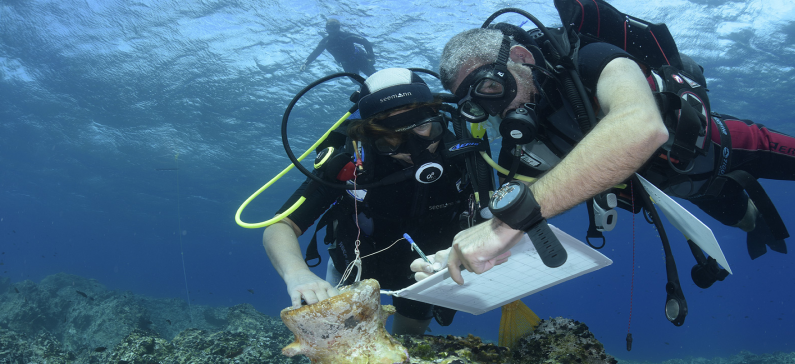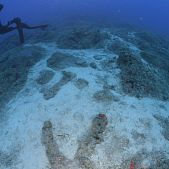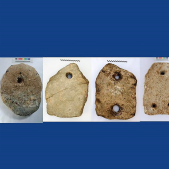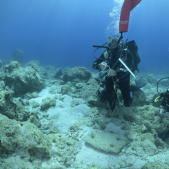
Underwater search in Naxos yields rich finds
Underwater search off the Greek island of Naxos island has yielded impressive finds of Classical, Roman and Byzantine eras such as stone anchors, late-class amphora, utilitarian vessels, clay pipelines and 15 lithosphere tracks. Greece’s Culture Ministry announced that underwater research along the southern coast of Naxos has been carried out for the second consecutive year by the Ephorate of Old Antiquities in collaboration with the Norwegian Institute of Athens in the framework of a three-year co-operative program. Research is of particular interest since, for the first time, the underwater area of southern Naxos, from Alyko to Panormos, is systematically investigated. It is an isolated area ideal for port exploration, since it remains largely unscathed by modern interventions.
The main objective of the program is the recording and mapping of anchoring sites during ancient and Byzantine times. This year’s survey ran from 18 to 29 September 2017, and based on the results of the previous survey period (2016), it focused on places of increased interest. From the bay of Ag. Sozontos, NA of Cape Moni, 5 stone anchors and diagnostic samples of ceramics, such as a late-class amphora, utilitarian vessels of classical era, an integral part of a post-Roman / Byzantine clay pipeline, etc., are believed to indicate that the natural harbor was used from the archaic to the Byzantine period as anchorage. Iron anchors and anchor fittings (strings) were also found in the same bay. Batteries and scraps of ceramics were found in Andrios bay, testifying the activity from Roman and Late Roman times. In Panormos bay there are 15 lithosphere tracks demonstrating shiploads in the area. The finds of pottery suggest the use of the site mainly during the Roman and Late Roman periods. A new location with a rich pottery concentration was found in Turkospilia, west of Akrotiri, Panormos. The objects that were removed (mainly amphoras) date from the 1st century. B.C. until late-Roman and Byzantine times.
The research program will give new insights into how the remote areas without obvious coastal facilities were linked to the sea and, by extension, to the Mediterranean world. It can give new information about unknown seaside locations, used as links between the inland and sea settlements. The study will reveal whether these natural harbors were only used by specific residential centers at particular times or if they were unaffected by habitat changes in inland settlements.
The survey was conducted under the direction of the Head of Ephorate of Underwater Antiquities Dr. Angeliki Simosi, while scientifically responsible and participating in the field was the diving architect engineer Aikaterini Tagonidou. From the Norwegian side, the director of the research was the archaeologist Sven Ahrens, Curator of the Oslo Maritime Museum.











